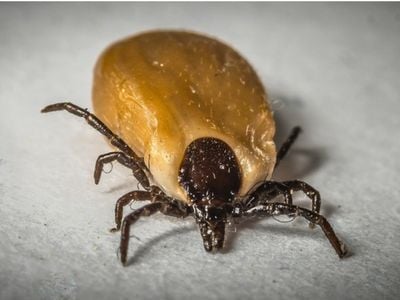Canine First Aid: Ticks
Posted on

Whilst ticks can be active throughout the year, we are entering into the season where they tend to be most prevalent. Do you know how to check for ticks on your dog, and, if you discover any, do you know how to safely remove them? Let's talk it through...
Where is my dog likely to pick up ticks?
Practically anywhere with long grass - eg woodland, moorland, meadows. Ticks like to hang out at the top of long stems of grass and then, when a suitable host animal brushes past, they attach themselves ready to feed. If you live in the countryside, you could even find ticks in your own garden, carried there by local wildlife.
Can ticks do serious harm to my dog?
A tick is classed as a parasite and your dog is the host. It is in the best interest of the parasite to keep the host alive. The intention of the tick is to suck a small amount of blood (comparative to your dog's size) and then fall off, use that blood to survive until it needs more and requires another host, then the cycle repeats.
However, if a tick feeds from an animal that could carry the Lyme disease bacterium (such as a deer or sheep), it can then carry that disease and pass it on to any animals that it subsequently feeds from. Lyme disease is a serious illness that requires immediate attention; it can also affect humans - direct from the tick, not from your infected dog. In dogs, it is characterised by sudden lameness, loss of appetite, lethargy and fever.
Another common time that problems can arise is when owners attempt to remove the tick using all sorts of weird and wonderful home remedies. Doing this incorrectly can result in part of the tick's body being left behind or, worse still, the tick regurgitating the blood and thereby introducing potentially dangerous diseases into your dog's bloodstream.

How do I check my dog for ticks?
Due to the way they tend to attach to host animals, you will generally find ticks around the head, neck, ears and front legs of your dog. However, you should give your dog a thorough check after all walks in grassland; not forgetting to check inside the ears and in between the pads of the feet. Ticks can be easily seen; looking like small spiders with an enlarged light grey body behind their legs - this body gets larger and darker as they take on more blood.
Never squeeze a tick whilst it is attached to your dog.
How do I safely remove a tick from my dog?
The only recommended safe way to remove a tick is by using a small, plastic tick-removing tool. These can be purchased cheaply from any good pet store or, quite often, from your veterinary practice. These tools come with instructions which are simple to follow but you essentially insert the tool between the tick and your dog's skin and then twist the tick off. Of course, if you want to be certain of being safe, you can always attend your veterinary practice to have any ticks removed.
Prevention & Treatment
You can protect your dog from ticks by treating them with various products that will either help to repel them, kill them once they bite your dog or kill them on contact. Your veterinary surgeon will be able to advise you on what is currently available as this changes frequently as new products enter the market.
If you believe that you have incompletely removed a tick, either by not using the conventional method or by leaving the front section of the tick embedded in your dog or you believe that the tick has regurgitated blood, you should seek veterinary advice as soon as possible.
Related Articles:
Canine First Aid: What To Have In Your Kit
Canine First Aid: Severe Bleeding

Add a comment: